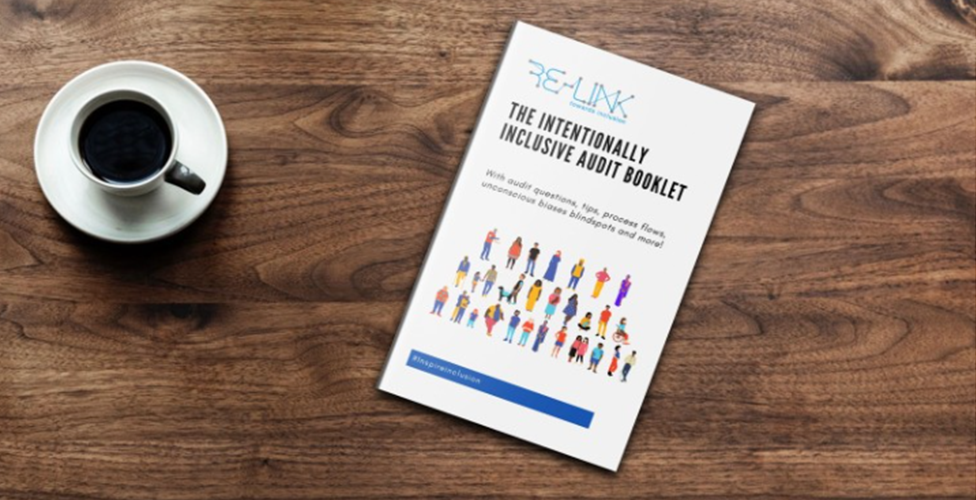Home » Inclusive Outcomes through Inclusive Processes.

Diversity, Equity, Inclusion- they are the new buzz words of the corporate world: the business benefits of having a diverse workforce is now a well-established concept. Experts have also talked about how companies with robust DEI practices, could respond better to the COVID crisis.
Organizations that are looking to start their DEI journey, often begin with putting diversity metrics in place- an increase in an X% of female employees of the diversity strands they are aiming for. While of course, this is a good place to commence, organizations often find it a challenge to sustain for one of two reasons; not having enough applications from the diverse candidates they are seeking to employ or too many expectations placed on one or two diverse candidates- almost as an experiment on seeing if a diversity intervention will work or not. This, however, is done without providing adequate support or growth opportunities for the candidate to succeed.
Enter: Inclusive Talent Processes.
An effective DEI strategy will impact employees at all stages of their career- from hiring to onboarding to career progression and development. Inclusivity has to be embedded at every stage of talent management- that identify the stumbling blocks that diverse candidates may face while applying for a position to ensure that employees feel their contributions are valued. Most importantly, that they do not feel like outsiders and sense being excluded from developmental opportunities.
For the above to happen, biases hotspots need to be identified and steps are taken to remove them or at the least mitigate their impact on the process itself. In this article, we have offered some trigger ideas for you to work with.
Inclusive Hiring:
In case, diversity metrics are what you are aiming for then close attention should be paid to your hiring process itself, which will, in turn, attract the right talent. Often, the diverse candidates feel that they may not be welcome or sometimes even suitable for your culture, due to which in spite of having the right credentials for the position, they may choose to not apply.
Some questions to ask yourself- are our JDs being written to attract only a type of candidate- for example, is it gender-neutral. Or are our current sourcing channels reaching diverse candidates, are interviews being conducted in the same setting for all candidates etc. There are many other factors to think about- the selection panel, the onboarding experience and others.
Inclusive Learning and Development:
This function can be the catalyst for building the culture of inclusivity as well as influence large scale mindset change. However, organizations do not always realize the massive impact that learning and development interventions can have! Biases can exist in the way training needs analyses are carried out and the way that targeted learning programs are designed.
Some trigger questions- Are our training programs designed to celebrate certain profile types. For example, is the communication training emphasizing extroversion as an important skill? Or is there too much focus only on inclusive leadership with no balancing interventions for employees at all levels to recognize everyday inclusive habits?
Inclusive Performance Management:
This process sets the tone and communicates to the employees on what and who is valued within the system! An inclusive performance process will ensure that all employees can improve their performance and build careers that they find meaningful and fulfilling. Biases exist in the way success is defined within the organization- a certain kind of personality type only, for example.
Some trigger questions: Does the review ignore employees are less articulate or less visible than their extroverted or more visible colleagues? Does the process allow employees to feel safe and authentic for exercising their working styles as well as expressing their identities? Are there performance standards defined for each role?
Equitable Compensation:
Compensation is an important factor that affects engagement and motivation. Fair and non-discriminatory practices, that has benefits systems for historically under-represented groups will improve the experience of being included- not just on paper but in spirit as well. It’s important to recognize areas where pay parity can be better achieved and take active steps to close the gaps if any.
Some trigger questions: Have roles and positions been analyzed for similarities in expected outcomes? For example, sales roles irrespective of the brands or categories. Or are starting salaries the same for similar jobs? An especially important question here is- Do we have benefits programs to support diverse groups; sex re-assignment, flexible work policies for new parents, assistive aids for persons with disabilities.
The above are just some of the starting points. Making the process inclusive will first require an audit of the current system and then planning to fill the gaps. It’s important to recognize that results will not come overnight. Rather, it is only through sustained and consistent efforts will you start to see the changes.
In case you would like to know more about this topic, do write to me. Happy to talk.
